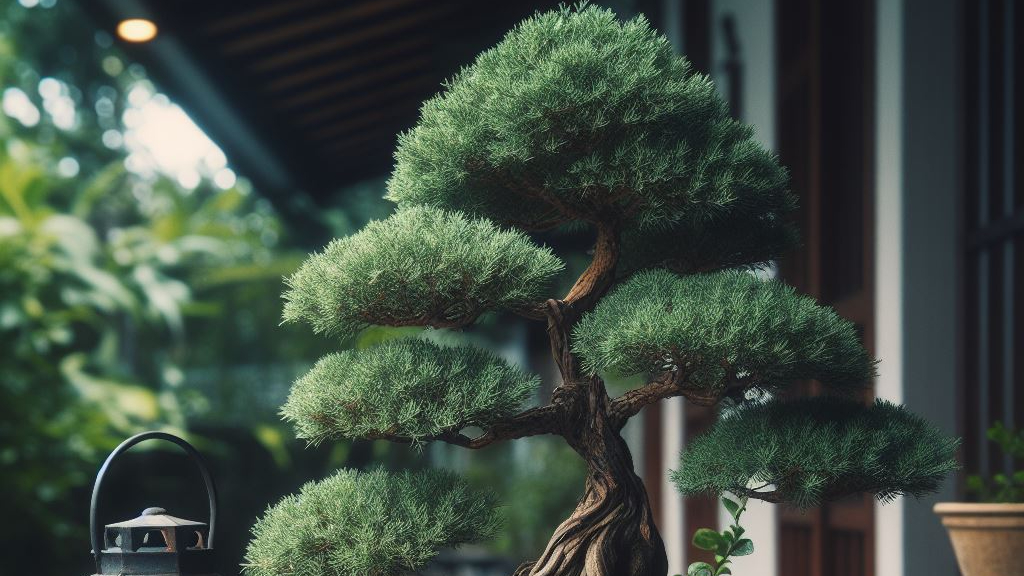Last updated on March 5th, 2024 at 05:22 am
Are you fascinated by the beauty of bonsai trees but feel overwhelmed by all the options available? Fear not, for we’re here to guide you through the enchanting world of different types of bonsai trees and their cultivation. Through careful techniques like root pruning, crown pruning, and the artful containment within shallow pots, bonsai artisans craft miniature marvels that echo the grandeur of their full-sized counterparts.
Some bonsai trees have pretty leaves or interesting bark that looks great in miniature form. Others are tough and easy to care for, making them perfect for beginners or anyone who wants a low-maintenance bonsai.
Each bonsai species unveils its unique allure, inviting enthusiasts to embark on a journey through a kaleidoscope of shapes, colors, and textures. Whether you’re enchanted by the delicate grace of a Juniper, the fiery hues of a Japanese Maple, or the rugged charm of a Pine, there’s a bonsai specimen to suit every palate and proficiency level. Explore the boundless creativity of bonsai cultivation and unlock the magic of these miniature masterpieces.
Different Types of Bonsai Trees
Juniper Bonsai:
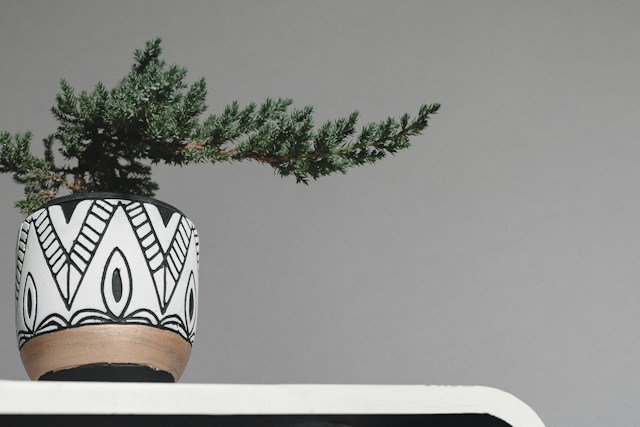
The Juniperus genus encompasses more than 50 species of evergreen coniferous trees and shrubs, making them highly sought-after for bonsai enthusiasts interested in exploring different types of bonsai trees. These versatile plants are prized for their adaptability to bonsai cultivation, thriving under careful shaping and maintenance.
Junipers are particularly favored in bonsai culture for two main reasons: their naturally small foliage, which complements the small-scale beauty of bonsai, and their ability to withstand aggressive pruning. However, it’s important to note that Juniper bonsai trees thrive best when grown outdoors in bright, sunny conditions and may not fare well indoors. Additionally, ensuring well-drained, dry soil is crucial for their health and vitality.
With a diverse range of color varieties, from yellow to pale green to dark green, depending on the species, Juniper bonsai trees offer a captivating array of choices for enthusiasts to explore and cultivate.
Ficus Bonsai:
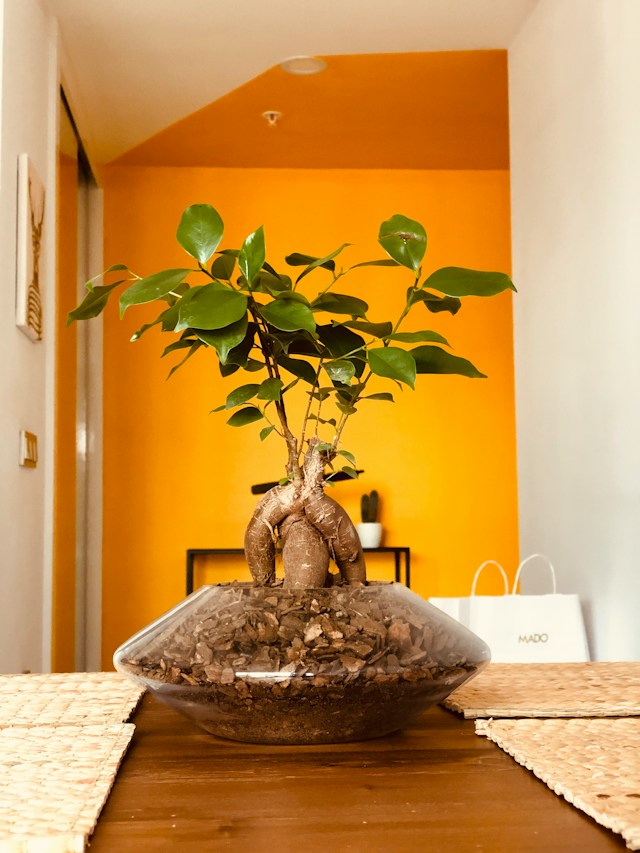
The Ficus genus presents an array of options for bonsai enthusiasts seeking diversity in their collection of different types of bonsai trees. These trees are revered for their adaptability and resilience, making them popular choices among beginners and experienced cultivators alike.
Ficus bonsai trees are cherished for their glossy leaves and impressive aerial roots, which lend an air of sophistication to any bonsai collection. With proper care and attention, Ficus bonsai thrive both indoors and outdoors, although they prefer bright, indirect sunlight and consistent watering to flourish. One of the most appealing features of Ficus bonsai is their ability to tolerate pruning and shaping, allowing enthusiasts to create intricate designs and unique compositions.
Whether you’re drawn to the classic Ficus macrocarpa, with its iconic aerial roots, or the elegant Ficus benjamina, known for its graceful drooping branches, there’s a Ficus bonsai variety to suit every taste and aesthetic preference.
Japanese Maple Bonsai:
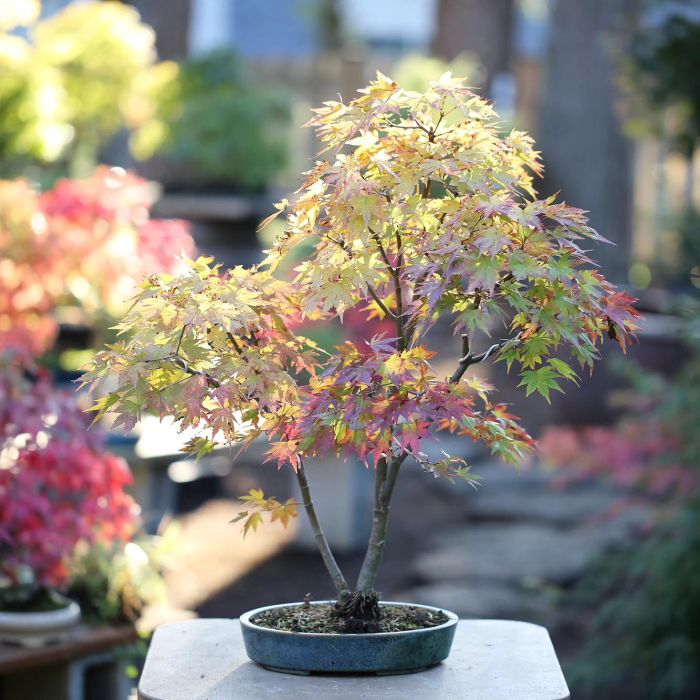
Image credit:#momiji.en
Japanese maple bonsai trees are renowned for their striking foliage, characterized by green or red-burgundy leaves that undergo a spectacular transformation come autumn, turning bright shades of red, yellow, or orange. From the different types of bonsai trees, these deciduous hardwood trees exhibit a captivating progression in bark color, starting with hues of green or reddish when young, and gradually maturing into grey or grayish-brown as they age.
However, aspiring Japanese maple bonsai enthusiasts need to be aware of the tree’s demanding water requirements. Japanese maples need a significant amount of water, especially during their growing season. Depending on the temperature and environmental conditions, they may need daily watering, sometimes even multiple times a day, to thrive.
When it comes to light, Japanese maple bonsai trees thrive in sunny or partially sunny locations. Their color variations add to their allure, with some varieties boasting yellow or red leaves throughout the spring to fall seasons, while others showcase a striking progression—starting with reddish hues in spring, transitioning to verdant greens in summer, and culminating in brilliant displays of reds, orange, or yellow during the fall months.
Chinese Elm Bonsai:
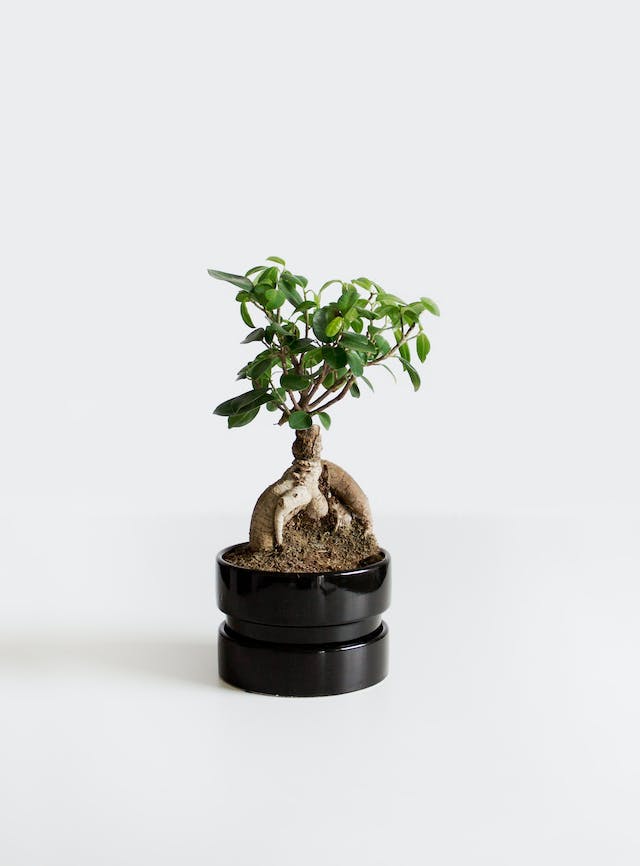
Among the different types of bonsai trees, the Chinese Elm stands out for its remarkable beauty and versatility. Throughout the seasons, it showcases a stunning range of colors, from vibrant greens in spring to rich canopies in summer, and brilliant hues of yellow, orange, and red in autumn. In winter, its graceful branching structure takes center stage.
Watering needs for the Chinese Elm bonsai are moderate, requiring consistently moist soil in spring and summer, while watering should be reduced in fall and winter to prevent waterlogging. This bonsai thrives in bright, indirect sunlight and benefits from regular pruning to maintain its shape and encourage branching. Repotting every two to three years and fertilizing during the growing season is essential for its health and vitality.
Pine Bonsai:
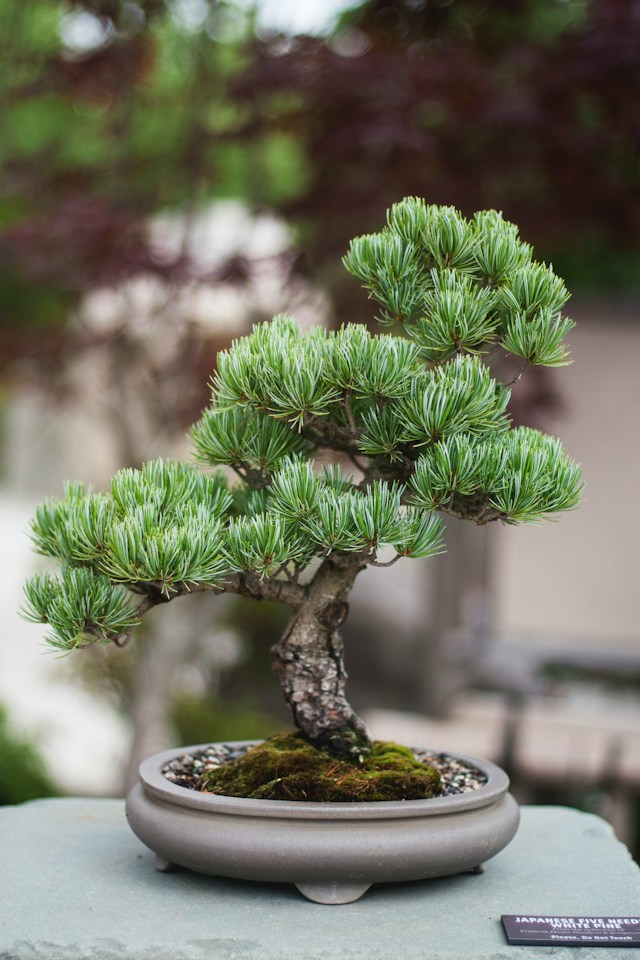
Among the different types of bonsai trees, the Pine bonsai stands out for its enduring charm and evergreen foliage. Its needles maintain a vibrant green hue year-round, providing a refreshing touch to any bonsai collection. The Pine bonsai prefers slightly drier conditions and thrives in well-drained soil.
During the growing season in spring and summer, regular watering is essential to keep the soil consistently moist. However, in fall and winter, watering should be reduced to prevent waterlogging. Regular pruning helps maintain its shape and encourage dense foliage growth while repotting every few years ensures optimal soil health. With proper care, the Pine bonsai remains a timeless and elegant addition to any bonsai enthusiast’s garden.
Trident Maple Bonsai:
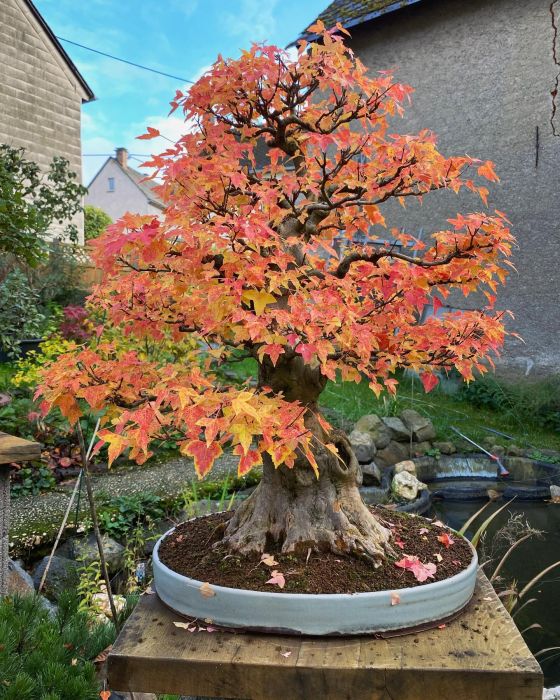
Image credit:#green_hell_bonsai
Among the different types of bonsai trees, the Trident Maple stands out for its stunning seasonal colors. In spring, it bursts with fresh green foliage, deepening into a lush canopy in summer. Come autumn, the Trident Maple transforms into vibrant shades of red, orange, and yellow, creating a striking display.
It prefers consistently moist soil during the growing season but requires reduced watering in fall and winter to prevent waterlogging. Regular pruning and repotting every few years help maintain its shape and promote healthy growth. With its captivating colors and easy care, the Trident Maple bonsai is a beautiful addition to any bonsai collection.
Serpentine Bonsai:
Among the different types of bonsai trees, the Serpentine Bonsai is prized for its unique, sinuous trunk that twists and curves gracefully. Its bark often exhibits a range of colors, from shades of brown to gray, adding to its character and charm. In terms of water requirements, the Serpentine Bonsai prefers moderate watering, ensuring the soil remains evenly moist but not waterlogged.
During the growing season in spring and summer, regular watering is essential to support healthy growth. However, in fall and winter, watering should be reduced to prevent waterlogging and root rot as the tree enters dormancy. Care for the Serpentine Bonsai involves regular pruning to maintain its distinctive shape and encourage branching development.
Additionally, repotting every few years helps refresh the soil and promote optimal root health. With its intriguing trunk and easy maintenance, the Serpentine Bonsai is a captivating addition to any bonsai collection.
Dwarf Boxwood Bonsai:
Dwarf Boxwood stands out for its compact size and elegant foliage. Its leaves typically showcase a deep green color, providing a lush and vibrant appearance year-round. In terms of water requirements, the Dwarf Boxwood prefers moderate watering, ensuring the soil remains evenly moist but not waterlogged.
During the growing season in spring and summer, regular watering is essential to support healthy growth. However, in fall and winter, watering should be reduced to prevent waterlogging and root rot as the tree enters dormancy.
Care for the Dwarf Boxwood involves regular pruning to maintain its shape and encourage compact growth. Additionally, repotting every few years helps refresh the soil and promote optimal root health.
Pomegranate Bonsai:
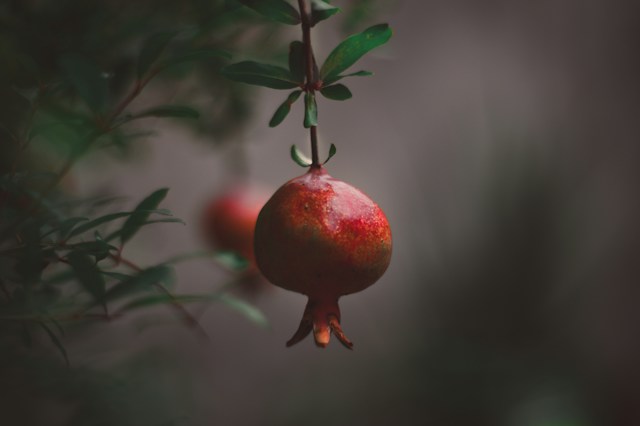
The Pomegranate Bonsai is prized for its ornamental value and unique fruiting capabilities. With glossy green leaves and vibrant, funnel-shaped flowers in shades of orange and red, it adds color and charm to any space. As summer transitions to fall, it bears round pomegranates ripening to a deep red hue.
In care, it prefers well-draining soil and moderate watering, ensuring the soil remains moist but not waterlogged. Regular pruning maintains its shape and encourages flowering and fruiting. Symbolizing abundance and prosperity, the Pomegranate Bonsai is a beautiful addition to any collection.
Dwarf Jade Bonsai:
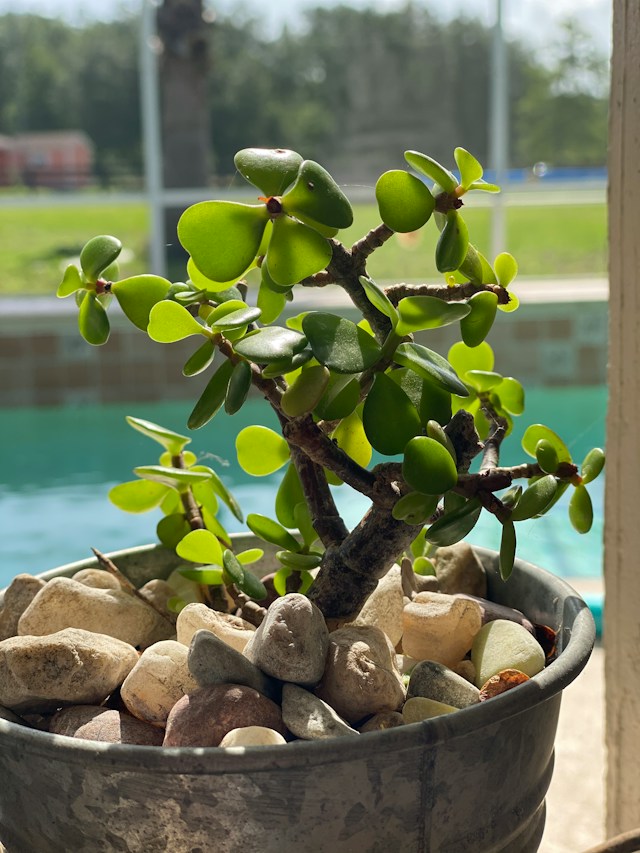
The Dwarf Jade Bonsai, also known as Portulacaria afra, is a popular choice among bonsai enthusiasts for its compact size and resilience. This succulent bonsai features thick, glossy leaves that grow in the form of clusters along its branches, giving it a distinctive appearance. Its stems and branches are often twisted or gnarled, adding to its aesthetic appeal.
In terms of care, the Dwarf Jade Bonsai grows in indirect, bright sunlight and thrives well in draining soil to prevent root rot. Sparingly watering should be perfect, allowing the soil to completely dry out between waterings to prevent overwatering. During the growing season in spring and summer, occasional fertilization with a balanced liquid fertilizer can promote healthy growth.
Pruning is essential to maintain the desired shape and size of the Dwarf Jade Bonsai, as it tends to grow vigorously. Trimming back new growth and shaping the branches helps to create a compact and visually appealing bonsai specimen.
Ginseng Ficus Bonsai:
Among the different types of bonsai trees, the Ginseng Ficus is a favorite for its unique root structure and lush foliage. Its thick, bulbous roots, resembling ginseng, create an eye-catching feature above the soil. With small, dark green leaves forming a dense canopy, this bonsai thrives in bright, indirect sunlight.
Caring for the Ginseng Ficus is straightforward. It thrives in soil that drains well and should be watered when the top layer of soil is dry to the touch. To prevent root rot, it’s important to refrain from overwatering. Regular trimming aids in preserving its form and promoting robust development. Its unique aesthetic and minimal maintenance requirements make the Ginseng Ficus an appealing inclusion in any bonsai assortment.
Japanese Flowering Cherry Bonsai:
Japanese Flowering Cherry is cherished for its stunning blossoms and graceful foliage. During spring, this bonsai bursts into a spectacle of fragrant pink or white flowers, creating an enchanting display.
Caring for the Japanese Flowering Cherry Bonsai is straightforward. It thrives in well-draining soil and enjoys plenty of sunlight. Regular watering keeps the soil moist but not waterlogged. While blooming, avoid pruning to preserve the blossoms. After flowering, pruning helps maintain the bonsai’s shape and promotes new growth.
With its breathtaking blooms and elegant foliage, Among the different types of bonsai trees, the Japanese Flowering Cherry Bonsai adds a touch of natural beauty to any bonsai collection, whether indoors or outdoors.
As you explore the enchanting world of bonsai cultivation and the artistry behind shaping these miniature marvels, remember that the beauty lies in the diversity offered by different types of bonsai trees. Whether you’re fascinated by the delicate foliage of a Juniper, the intricate branches of a Ficus, or the vibrant blooms of a Japanese Maple, each bonsai species offers a unique journey of discovery.
Embrace the diversity of bonsai cultivation and let your imagination soar as you create your own miniature landscapes, each one a testament to the beauty and resilience of nature.

